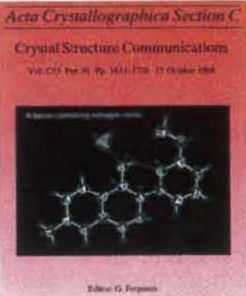


IUCr journals news
Twinning in chemical crystallography: new solution to an old problem
Acta Cryst. C55 (1999), 1774-1775

The cover of the November issue of Acta Cryst. C features a relatively simple germanium complex. Although interesting from a chemical point of view [for details see K. Hensen, A. Faber and M. Bolte, Acta Cryst. C55 (1999), 1774-1775], the structure determination is of particular interest because it illustrates a solution to an old crystallographic riddle. The challenge being to sort out the twinning problem that hampered structure determination and refinement.
Twinning is an old subject with known solutions. A number of software packages provide (partial) solutions for the refinement of twinned structures (e.g., CRYSTALS, D. Watkin et al. and RAELS, A.D. Rae). Recently relatively easy-to-use tools for the refinement of structures based on overlapping reflection data due to twinning have become available e.g., in the widely distributed SHELXL97 program (G.M. Sheldrick) and its commercial incarnation SHELXTL.
Twinning comes in many disguises. The structure highlighted here is of the non-merohedral twin index 5 variety. Formerly, crystals like this one would usually have been discarded. Nowadays, with CCD detector systems, indexing and data collection are only slightly more troublesome for twin crystals than for routine applications. The availability of both will mean that fewer potentially interesting structural investigations on otherwise well reflecting samples will be abandoned prematurely because of twinning problems.
The current study provides an excellent example of what a professional crystallographer can do with state-of-the-art hard and software.


